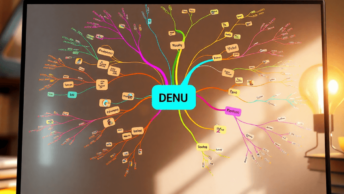Introduction
ChatGPT, an advanced AI language model, has significantly influenced the way we write. Its ability to generate coherent text based on user prompts has made it a popular tool for everything from drafting emails to creating detailed reports. However, as AI-generated text becomes more prevalent, recognizing when content is produced by tools like ChatGPT is increasingly crucial.
Identifying AI-generated text helps maintain authenticity and ensures the unique voice of the writer isn’t lost. This article aims to highlight 10 tell-tale signs that indicate you’ve used ChatGPT in your writing. By understanding these signs, you can enhance the originality and credibility of your content.
It’s worth noting that while AI is transforming various industries, leading to concerns about job displacement, there are still jobs that remain safe from AI. Moreover, if you’re looking for alternatives or supplements to AI-generated content like ChatGPT, there are several free AI content generator plans available online that don’t require a credit card.
As we delve deeper into the signs of AI-generated text, it’s essential to remember that maintaining writing authenticity is key.
1. Overused Words and Phrases
One of the key indicators of AI-generated text is the presence of overused words and phrases. These are terms that appear repeatedly and lack originality, often making the writing feel mechanical or forced.
Commonly Used Words by ChatGPT
ChatGPT frequently uses words such as:
- accordingly
- thus
- consequently
- nevertheless
These terms are peppered throughout AI-generated content, aiming to create a semblance of coherence but often resulting in redundancy.
Examples of Overused Phrases
Here are some examples of how these phrases might be used:
- “It is thus important to…”
- “Consequently, this leads to…”
Impact on Writing Quality
Using such phrases excessively impacts writing quality by diminishing its natural flow and making it sound repetitive. It also reduces the uniqueness of the text, making it less engaging for readers. Recognizing these patterns can help you identify when AI might have been used in creating the content.
However, it’s worth noting that not all AI-generated content lacks creativity. There are 10 crazy free AI tools that can produce surprisingly unique outputs. Embracing such tools could lead to a more innovative use of language rather than falling into the trap of overused phrases.
In a world that is constantly changing and unpredictable, being able to thrive in chaos is incredibly valuable. This concept of antifragility, introduced by Nassim Nicholas Taleb, could also apply here. By recognizing and adapting to these patterns in AI-generated text, we can improve our writing quality and make it more engaging for readers.
2. Mechanical Writing Style
Mechanical writing refers to text that feels robotic and lacks the nuanced touch of human creativity. Here are some common characteristics of ChatGPT text:
- Overly complex sentence structures: Sentences may be unnecessarily long, with multiple clauses that complicate readability.
- Unusual tone: The tone can shift unpredictably between overly formal and oddly casual, creating a disjointed reading experience.
These mechanical traits affect reader perception by making the content feel less engaging and harder to connect with emotionally. For instance, instead of saying, “The team worked hard to meet the deadline,” ChatGPT might produce, “The team exerted considerable effort to ensure the timely completion of the project.” This not only makes the sentence longer but also less relatable.
3. Excessive Formality or Casualness in Tone
ChatGPT often swings between extremes of formality and casualness, which can be a dead giveaway of AI-generated content. This unusual tone is noticeable in various contexts, such as overly formal emails or excessively casual messages.
Consider these examples:
- Overly Formal Email:
- Dear Sir/Madam,
- It is with utmost respect and admiration that I extend my gratitude for your prompt attention to this matter. Your assistance has been invaluable, and I am indebted to your exemplary service.
- Yours sincerely, [Your Name]
- Excessively Casual Message:
- Hey, what’s up?
- Just wanted to shout out a big thanks for the quick help! You’re awesome!
- Cheers, [Your Name]
The impact on audience connection is significant. Excessive formality may make the text feel stilted and distant, while excessive casualness can come across as unprofessional or flippant. Detecting AI-written work involves recognizing these tone inconsistencies, as natural human writing typically strikes a balance that resonates better with readers.
4. Unnatural Greetings and Sign-offs
Identifying ChatGPT-generated text often starts with its mechanical writing, especially in greetings and sign-offs. These elements sometimes feel robotic and lack the natural flow of human interaction.
Common but Unnatural Greetings:
- “Greetings of the day,”
- “Esteemed [Recipient],”
- “I hope this message finds you well,”
Unusual Sign-offs:
- “Yours sincerely,”
- “With utmost respect,”
- “In anticipation of your favorable response,”
Contextual Examples:
- Emails:
- Greeting: “Greetings of the day,”
- Sign-off: “Yours sincerely,”
- Cover Letters:
- Greeting: “Esteemed Hiring Manager,”
- Sign-off: “With utmost respect,”
These unnatural greetings and sign-offs create a barrier to authenticity. Readers may find it harder to connect with the content, sensing a generic and impersonal tone that undermines genuine communication.
5. Challenges in Detection and Strategies for Improving Authenticity in Your Writing
Challenges in Detecting AI-Written Text
Detecting AI-generated content presents unique challenges due to the increasingly sophisticated capabilities of tools like GPTZero. These models aggregate responses from a vast dataset, often resulting in generic or vague outputs that can evade simple detection mechanisms. This arms race between detectors and evaders continues to evolve, making it difficult to maintain consistent identification methods.
The Arms Race Between Detectors and Evaders
As AI models become more advanced, so too do the methods for detecting them. However, these detection tools often lag behind the latest AI developments. The nature of this ongoing arms race highlights the necessity for continuous updates and improvements on both sides, making it a dynamic and challenging field.
Tips for Enhancing Authenticity in Your Writing
To ensure your writing remains authentic:
- Avoid Overused Phrases: Steer clear of phrases commonly employed by ChatGPT such as “accordingly,” “thus,” and “moreover.”
- Use Specific Examples: Incorporate concrete examples instead of general statements.
- Interact with AI for Editing: Use ChatGPT as an editing tool rather than a primary writer to refine your own words.
Alternatively, you might consider exploring new free AI writer tools that can assist in creating content while maintaining authenticity.
By focusing on these strategies, you can enhance the authenticity of your writing while staying ahead in the evolving landscape of AI-generated content detection. In addition, acquiring some money-saving skills could be beneficial during economically uncertain times. Moreover, if you’re considering a lifestyle change, there are digital nomad countries that welcome remote workers, providing an inspiring backdrop for your work.
Conclusion
Striving for authenticity and creativity in your writing sets you apart. Recognizing and identifying overused phrases in AI writing can significantly enhance the quality of your work. Embrace originality by avoiding the common pitfalls associated with AI-generated text. Authenticity resonates more deeply with your audience, fostering a genuine connection. Remember, words and phrases that make it obvious you used ChatGPT can undermine your credibility.
However, this journey towards creating unique content doesn’t have to be confined to a single location. The rise of remote work has opened up opportunities for many to adopt a digital nomad lifestyle, allowing them to explore different cultures while still fulfilling their professional responsibilities. Prioritize clear, engaging, and unique content to leave a lasting impact.








